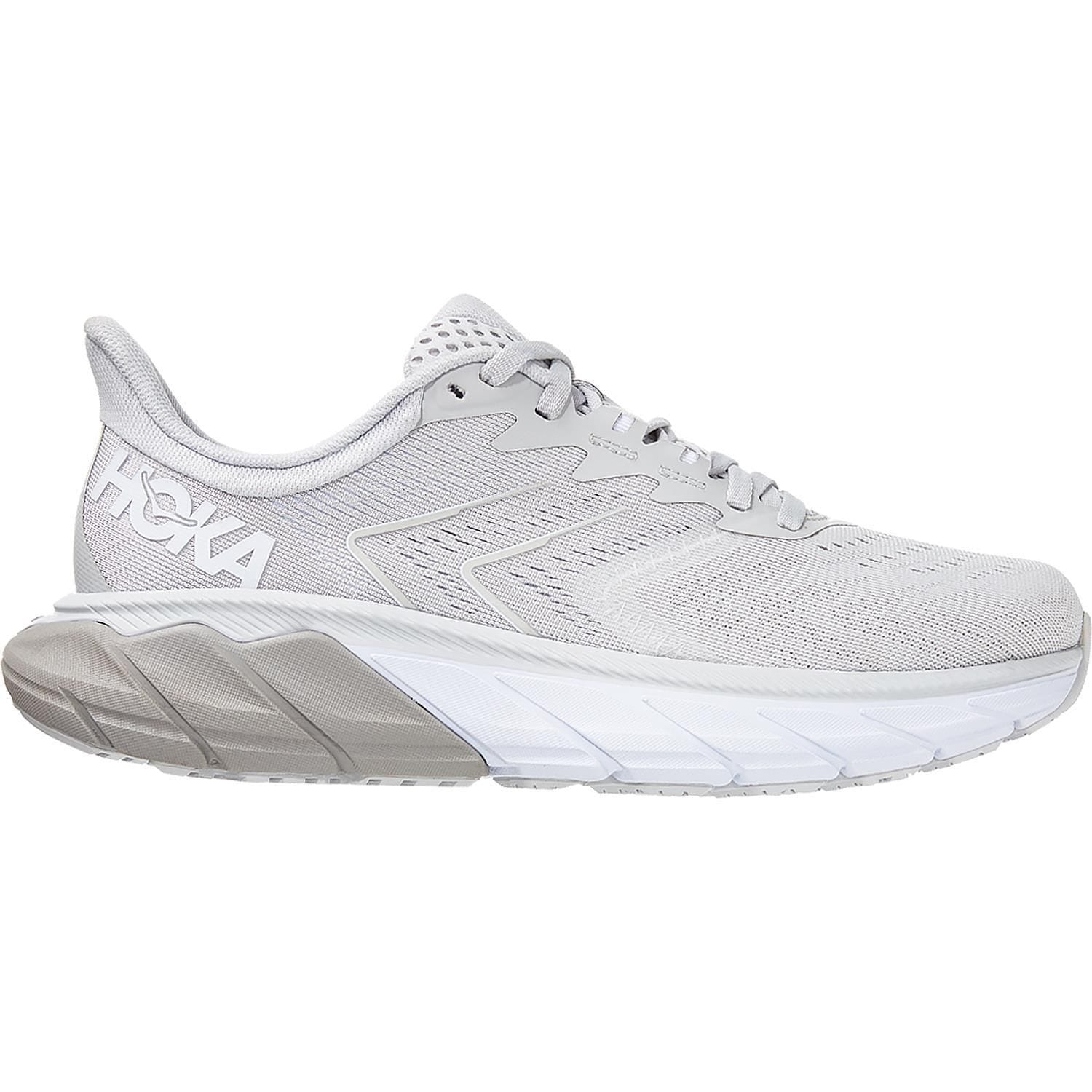If you’ve ever experienced throbbing foot pain, plantar fasciitis could be the culprit. But don’t despair! Hoka One shoes are gaining a reputation for providing relief and comfort, like a gentle hug for your soles. Let’s explore how these unique shoes might help you conquer plantar fasciitis and rediscover the joy of walking.
Why Hoka for Plantar Fasciitis?
Hoka shoes are creating a buzz in the foot pain community, and for good reason. They boast features designed to support and cushion your feet, which can be especially helpful if you’re battling plantar fasciitis.
- Superior Cushioning: Hoka’s signature feature is their super-cushioned soles. This generous cushioning helps absorb the shock of each step, reducing the stress and strain on your plantar fascia.
- “Meta-Rocker” Technology: The unique curved sole of Hoka shoes gently guides your foot through a natural rolling motion as you walk or run. This can be a game-changer for plantar fasciitis sufferers as it minimizes the painful pulling sensation on the fascia.
- Podiatrist Recommended: It’s not just hype—many podiatrists recommend Hoka shoes to their patients struggling with plantar fasciitis. They’ve witnessed firsthand how these shoes can help ease pain and create a more supportive environment for healing.
However, it’s important to remember that Hoka shoes are not a magical cure for plantar fasciitis. They are one tool that, when combined with other therapies like stretching, physical therapy, and orthotics (if recommended by your doctor), can make a significant difference in managing your pain.
Finding Your Perfect Hoka Fit
Not all Hokas are created equal! Just like finding the right pair of jeans, you need to find the Hoka model that best suits your foot type and activity level.
Here’s a quick guide to popular Hoka models:
| Hoka Model | Best For | Key Features |
|---|---|---|
| Bondi 8 | Everyday wear | Maximum cushioning, like walking on clouds |
| Arahi 7 | Flat feet, overpronation | Stability and support to correct inward foot roll |
| Gaviota 5 | Walking, long distances | Designed to go the extra mile |
| Clifton 9 | Everyday runs | Balanced cushioning and responsiveness |
| Ora Recovery 3 | Recovery after activity | Reduces stress on feet, perfect post-workout |
| Anacapa Breeze | Hiking, uneven terrain | Ankle support for rough trails |
When choosing your Hokas, consider:
- Foot Type: Do you have high arches, flat feet, or neutral feet? Understanding your foot type will help you select a shoe with the appropriate level of support.
- Activity Level: A casual walker will have different needs than a marathon runner. Think about how you’ll be using your shoes most often to find the right fit for your lifestyle.
- Comfort is Key: Don’t underestimate the importance of a comfortable fit. Make sure you have enough wiggle room in the toe box and that the shoes feel snug but not too tight.
Beyond Hoka: A Holistic Approach to Plantar Fasciitis Relief
While Hoka shoes can be a real game-changer for managing plantar fasciitis pain, it’s crucial to remember that they are just one piece of the puzzle. Here are some additional tips for finding relief:
- Stretching: Regularly stretching your plantar fascia and calf muscles can work wonders. Simple stretches, like pointing your toes towards your shin or using a towel to stretch your foot, can significantly impact your pain levels.
- Arch Support: Consider adding orthotics – those supportive inserts you put in your shoes – for extra arch support. You can find over-the-counter options or consult a podiatrist for custom-made orthotics.
- Physical Therapy: If your pain is persistent, a physical therapist can create a personalized exercise plan, provide hands-on treatment, and teach you pain management techniques.
Remember, everyone’s feet are different. What works for one person might not work for another. While Hoka shoes have helped many people find relief from plantar fasciitis pain, it’s essential to listen to your body, consult with a healthcare professional, and explore a combination of therapies to find what works best for you.
Are Hoka Shoes the Only Answer for Plantar Fasciitis?
Hoka shoes have definitely earned their place in the spotlight when it comes to plantar fasciitis relief. Their unique combination of cushioning and rocker-bottom technology has brought comfort to many. But are they the only answer? The short answer is no.
While Hoka is a popular choice, they aren’t the only brand crafting shoes with features that may benefit those with plantar fasciitis. Other reputable brands like Brooks, Asics, and Saucony also offer shoes with supportive features that might be worth exploring.
The key is to prioritize what matters most:
- Cushioning: Look for shoes with ample cushioning to absorb the impact of each step.
- Arch Support: Shoes with good arch support can help prevent the over-pronation that can exacerbate plantar fasciitis.
- Heel Stability: A stable heel counter can help control the motion of your foot as you walk, reducing strain on the plantar fascia.
- Proper Fit: No matter how well-designed a shoe is, if it doesn’t fit properly, it won’t provide the support you need.
It’s important to remember that what works best for one person might not work for another. Don’t be afraid to experiment with different brands and models to find the shoe that feels best for your unique feet.
Expert Advice: What Do Podiatrists Recommend?
Podiatrists, the foot experts, often find themselves answering the question, “What shoes are best for plantar fasciitis?” While they can’t recommend a specific shoe for everyone, they consistently emphasize several key features:
- Cushioning: This helps to absorb the shock that travels up your legs with each step, reducing stress on the plantar fascia.
- Arch Support: Proper arch support helps to prevent the foot’s arch from collapsing inward, which can strain the plantar fascia.
- Heel Stability: This feature helps to keep the heel from rolling inward as you walk, which can also contribute to plantar fasciitis pain.
Remember, shoes are just one piece of the puzzle. Podiatrists also recommend:
- Stretching: Regularly stretching your plantar fascia and calf muscles can make a big difference.
- Orthotics: Custom or over-the-counter orthotics can provide additional support for your arches and cushion your feet.
- Rest: When your feet are hurting, sometimes the best thing you can do is rest and avoid activities that aggravate your pain.
- Ice: Applying ice to the affected area for 15–20 minutes at a time can help reduce inflammation.
- Pain Relievers: Over-the-counter pain relievers like ibuprofen or naproxen might offer some temporary relief.
If you’re struggling with plantar fasciitis, the best thing you can do is schedule an appointment with a podiatrist. They can properly diagnose the cause of your pain and recommend a personalized treatment plan that may include a combination of therapies, including supportive footwear.
Finding Your Path to Foot Pain Relief
Dealing with plantar fasciitis can be incredibly frustrating, but remember, you’re not alone! This common condition affects many people, and thankfully, there are things you can do to find relief.
Whether you’re drawn to the super-cushioned world of Hokas, prefer to explore other brands, or opt for a combination of therapies, the most important step is to take action. Consult with a podiatrist, listen to your body, and experiment with different solutions to find what works best for you. With a little patience and the right approach, you can get back to enjoying pain-free walks and a more active lifestyle.
Interested in learning all about the fascinating world of the honeybee? Head over to https://www.lolaapp.com/honeyybee for an in-depth look into the life and habits of these buzzing creatures. Looking for a pronunciation guide on axolotl? Find our detailed guide over at https://www.lolaapp.com/how-do-you-pronounce-axolotl to avoid any mispronunciations.
- Mastering Leader in Spanish: The Complete Guide - April 19, 2025
- Uncovering Surprising Parallels: England Size Compared to US States - April 19, 2025
- Old Mexico Map: Border Shifts 1821-1857 - April 19, 2025

















1 thought on “Hoka One Shoes: Your Secret Weapon Against Plantar Fasciitis Pain”
Comments are closed.